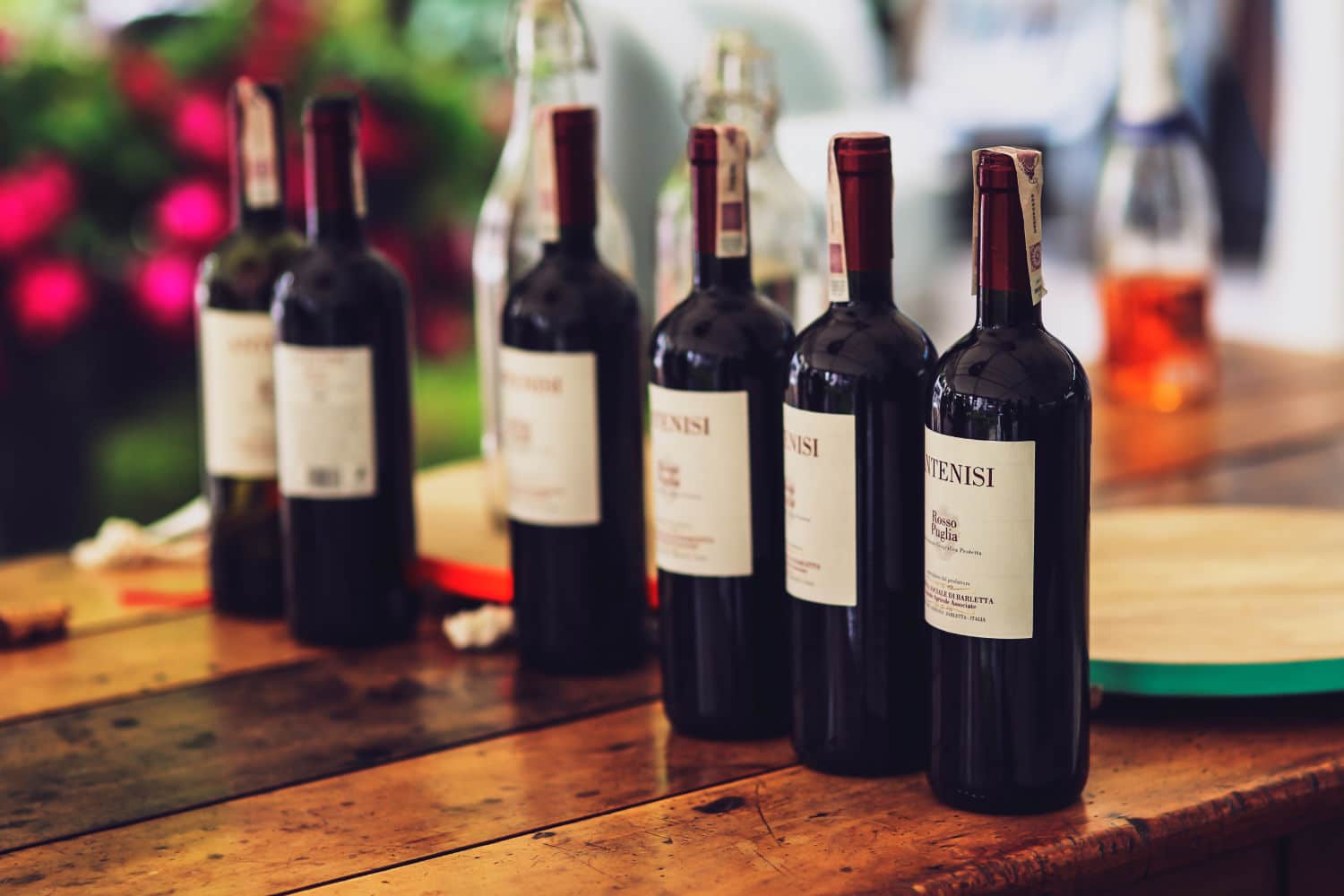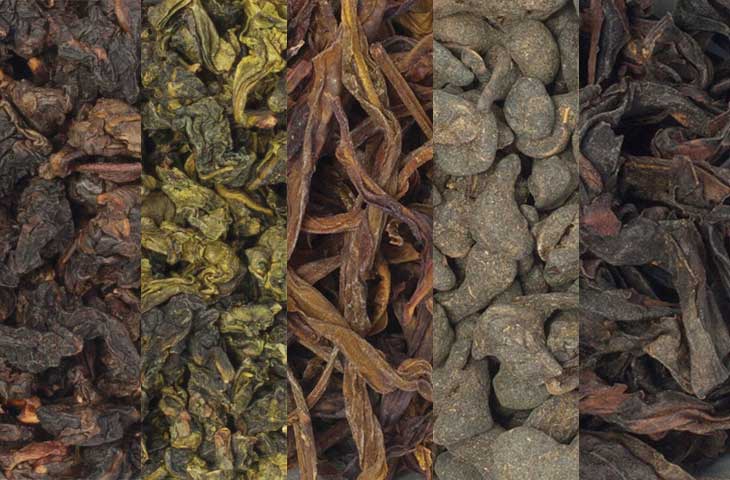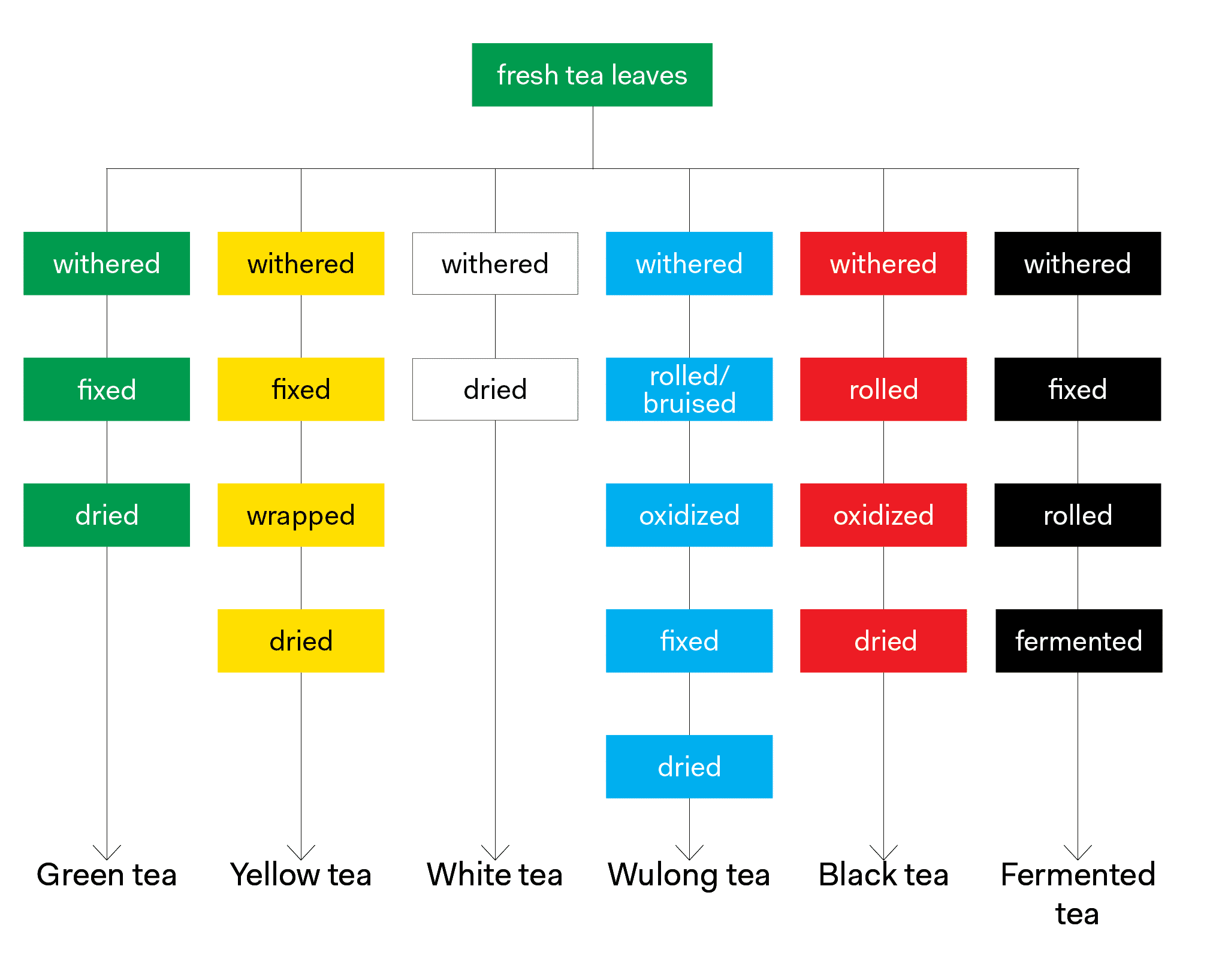This is an excerpt from Tony’s book, Tea: A User’s Guide. For more information on the book, please visit the book’s website.
Puer 普洱 (pǔ ěr) is arguably the most famous fermented tea in China. Widespread speculation led to a meteoric rise in Puer popularity and price, with a tenfold increase in prices seen from 1999 to 2007. Overspeculation led to a bubble that burst in 2007. Puer prices still fluctuate, and some regional Puer teas still remain some of the most expensive teas in China.
To be considered a Puer, the tea leaves must be grown in Yunnan Province and must be from descendants of Camellia sinensis var. assamica, known colloquially as Da Ye Zhong (大叶种) or large leaf type. The leaves must also be dried in the sun.
There are two styles of Puer, Sheng Puer and Shu Puer. Each style begins with Puer Mao Cha (毛茶), literally coarse tea or unfinished tea. Puer Mao Cha, the raw material for Puer, is made by pan-firing large leaves from the Da Ye Zhong variety of Camellia sinensis, rolling the leaves, and then drying them in the sun. At this point, the Mao Cha can be made into Shu Puer or Sheng Puer; the only differences are the processing methods for each, which are explained below.
Historically Puer was compressed for easy transport, but today Puer tea leaves are compressed into shapes for three reasons: presentation, aging, and dosing. Here is a rundown of the common shapes of Puer:
Bing Cha (饼茶, bĭng chá) or Cake Tea
Refers to tea leaves pressed into a round flat disk or cake shape.
Fang Cha (方茶, fāng chá) or Square Tea
Refers to tea leaves pressed into squares.
Tuo Cha (沱茶, tuó chá) or Bowl Shape Tea
Refers to tea leaves pressed into shapes that resemble a birds nest.
Jin Gua Cha (金瓜茶, jīn guā chá) or Golden Melon Tea
Also known as melon-shaped tea, refers to tea leaves pressed into a melon-shape.
Jin Cha (紧茶, jĭn chá) or Tight Tea
Refers to tea leaves formed into a mushroom shape.
Puer is also often pressed into items such as oranges (Ju Pu Cha: 菊普茶, jú pǔ chá), pomelos (You Zi Cha: 柚子茶, yòu zi chá) and bamboo culms (Zhu Tong Cha: 竹筒茶, zhú tǒng chá).
Bing Cha is the most common shape of compressed Puer tea on the market. Because bings commonly fetch steep prices, they are often counterfeited. Producers have taken several steps to help curb counterfeiting. First, a small label, basically a certificate of authenticity is literally compressed into the bing. This label is called a Nei Fei (内飞). Another label, called a Nei Piao (内票) is placed on top of the bing before it is wrapped in paper. The paper wrapping is printed with the name of the tea and the factory that produced it.
The most common weight for a bing is 357 grams. The reason for this seemingly odd number has to do with how tea was historically transported. Wrapped bings are stacked in piles of seven and are covered with a bamboo sheath. They are then wrapped with bamboo thread or wire. The package is called a Tong (筒, literally tube). 12 tongs are packed together into a larger woven bamboo basket called a Jian (件) weighing about 30 kg. A mule can carry approximately 60 kg, so one 30 kg jian was strapped to either side of a mule for transport.
Puer Mao Cha (普洱毛茶, pŭ ĕr máo chá) or Puer Coarse (Unfinished) Tea
Puer Mao Cha is the base material used both for Sheng and Shu Puer production. Puer Mao Cha is produced by withering and then pan-firing large leaves from plants that are descendents of Camellia sinensis var. assamica, known colloquially as ‘Da Ye Zhong’ (大叶种) or large leaf type. After being fixed, the leaves are rolled and dried in the sun. It is important to note that the temperature of the fixing step is lower than that used for other teas; the lower temperature helps to retain some of the flavanols responsible for oxidation.
Sheng Puer Cha (生普洱茶, shēng pǔ ěr chá) or Raw Puer Tea
Literally Raw Puer Tea, Sheng Puer is a style of Puer wherein Puer Mao Cha is aged naturally over time. Aging here refers to a combination of oxidation and fermentation. Sheng Puer is sold loose or compressed into various shapes (most commonly bings). The taste of Sheng Puer is enhanced with proper aging, and older bings that have been stored properly can be worth large amounts of money. This style of Puer is primarily responsible for the Puer bubble of 2007.2 Sheng Puer made from the leaves of old trees, known as Gushu (古树), is particularly prized. Because this tea is also enjoyed in a fresh unfermented state, there is some debate in the tea world over whether or not Sheng Puer should be considered a fermented tea.
Shu Puer Cha (熟普洱茶, shú pǔ ěr chá) or Ripened Puer Tea
Shu Puer is a style of Puer wherein Puer Mao Cha is pile-fermented, a process known as Wo Dui (渥堆) or wet piling. Wet piling was developed in 1973 to mimic the results of slow-aged Sheng Puer. During pile fermentation, Puer Mao Cha is piled and covered with damp cloths. Additional moisture is added to the pile, and the leaves are left to ferment for around 45 days, being turned occasionally to promote even fermentation. Once complete, the leaves are dried, sorted and either compressed or sold loose.




